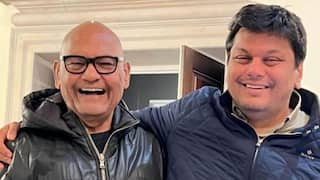NASA's New Space Pic On Halloween Reveals Giant Pair Of 'Ghostly Eyes', But It's Not What You Think
NASA's "ghostly eyes" image, released on Halloween, combines data from Hubble and Webb telescopes. Check out the image below.

National Aeronautics and Space Administration (NASA) released a pic of a "creepy" pair of giant "eyes" floating in space. What made it even more eerie was the fact that NASA chose October 31, Halloween, to release the image — its way of sharing the celebrations. However, the image is not what may be running through your wild imagination.
What Are The 'Eyes' In Reality?
NASA's photo was a composite image made of a combination of mid-infrared light from the James Webb Space Telescope with visible and ultraviolet light from the Hubble Space Telescope. The result was a "long, ghastly stare of their searing eye-like cores shining out into the supreme cosmic darkness".
The James James Webb Telescope's mid-infrared view captures star formations occurring at present and the Hubble Telescope offers images of young stars that have recently burst to life.
The 'eyes' are actually spiral galaxies which grazed each other millions of years ago. We are witnessing the phenomena only now due to the sheer distance of millions of light years that the light from these galaxies had to travel to Earth. To be precise, they are 114 million light years away from Earth. For reference, 1 light year is around 9.46 trillion kilometres.

The smaller spiral on the left is Galaxy IC 2163, which is slowly “creeping” behind spiral galaxy NGC 2207 on the right. NGC 2207, the larger galaxy, is exerting a gravitational pull on IC 2163. Although the image doesn't show the two galaxies colliding yet, the gravitational pull has resulted in tidal extensions of their spiral arms, which are ethereal tendrils showing the cosmic interaction of the two galaxies.
The sheer sizes of the galaxies are overwhelming in themselves, with IC 2163 measuring 101,000 lightyears across. This is nearly the size of our own Milky Way, which is 100,000 light years. NGC 2207 is 143,000 lightyears across.
The blue streaks in the photos are clusters of stars forming fast. The red glowing regions show dust that cover the stars. Check out the video below to understand more about the two galaxies.





































